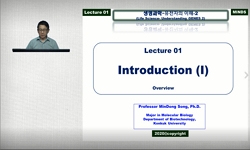Purpose: While rapeseed oil, soy bean oil, palm oil and waste cooking oil are being used for biodiesel, the viscosity of them should be lowered for fuel. The most widely used method of decreasing the viscosity of vegetable oil is to convert the vegeta...
http://chineseinput.net/에서 pinyin(병음)방식으로 중국어를 변환할 수 있습니다.
변환된 중국어를 복사하여 사용하시면 됩니다.
- 中文 을 입력하시려면 zhongwen을 입력하시고 space를누르시면됩니다.
- 北京 을 입력하시려면 beijing을 입력하시고 space를 누르시면 됩니다.
https://www.riss.kr/link?id=A105166553
- 저자
- 발행기관
- 학술지명
- 권호사항
-
발행연도
2012
-
작성언어
English
- 주제어
-
등재정보
KCI등재,SCOPUS
-
자료형태
학술저널
- 발행기관 URL
-
수록면
429-433(5쪽)
- 제공처
- 소장기관
-
0
상세조회 -
0
다운로드
부가정보
다국어 초록 (Multilingual Abstract)
Purpose: While rapeseed oil, soy bean oil, palm oil and waste cooking oil are being used for biodiesel, the viscosity of them should be lowered for fuel. The most widely used method of decreasing the viscosity of vegetable oil is to convert the vegetable oil into fatty acid methyl ester but is too expensive. This experiment uses ultrasonic energy, instead of converting the vegetable oil into fatty acid methyl ester, to lower the viscosity of the waste cooking oil. Methods: For irradiation treatment, the sample in a beaker was irradiated with ultrasonic energy and the viscosity and temperature were measured with a viscometer. For heating treatment, the sample in a beaker was heated and the viscosity and temperature were measured with a viscometer. Kinematic viscosity was calculated by dividing absolute viscosity with density. Results: The kinematic viscosity of waste cooking oil and cooking oil are up to ten times as high as that of light oil at room temperature. However, the difference of two types of oil decreased by four times as the temperature increased over $83^{\circ}C$. When the viscosity by the treatment of ultrasonic energy irradiation was compared to one by the heating treatment to the waste cooking oil, the viscosity by the treatment of ultrasonic energy irradiation was lower by maximum of 22% and minimum of 12%, than one by the heating treatment. Conclusions: Ultrasonic energy irradiation lowered the viscosity more than the heating treatment did, and ultrasonic energy irradiation has an enormous effect on fuel reforming.
동일학술지(권/호) 다른 논문
-
- 한국농업기계학회
- 강태경 ( Tae Gyoung Kang )
- 2012
- KCI등재,SCOPUS
-
칼만필터를 이용한 농용 균평헬리콥터의 살포비행자세 평가
- 한국농업기계학회
- 박희진 ( Hee Jin Park )
- 2012
- KCI등재,SCOPUS
-
도난방지 및 구조신호 전송기능이 있는 저가형 농용트랙터 블랙박스 개발
- 한국농업기계학회
- 김유용 ( Yu Yong Kim )
- 2012
- KCI등재,SCOPUS
-
수송 트레일러의 충격흡수장치 개발 (IV) -동력경운기 적재함의 연결히치, 판스프링, 쇽업쇼바-
- 한국농업기계학회
- 홍종호 ( Jong Ho Hong )
- 2012
- KCI등재,SCOPUS






 ScienceON
ScienceON






